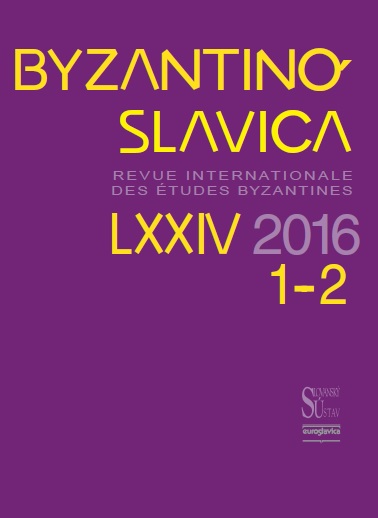Multiple hierarchies: servants and masters, monastic officers, ordained monks, and wearers of the Great and the Small habit at the Stoudios Monastery (10th – 11th Centuries)
Multiple hierarchies: servants and masters, monastic officers, ordained monks, and wearers of the Great and the Small habit at the Stoudios Monastery (10th – 11th Centuries)
Author(s): Dirk KrausmüllerSubject(s): Ancient World
Published by: AV ČR - Akademie věd České republiky - Slovanský ústav and Euroslavica
Keywords: hierarchy;monasteries;Byzantine;
Summary/Abstract: This article analyses the Stoudios Typikon, a monastic rule from the late tenth century. The original is lost but the rule can be reconstructed through comparison of later adaptations. Analysis of the text shows there were three hierarchies within the community of Stoudios: the monastic offi cials responsible for the administration of the monastery under the oikonomos, the priests and deacons under the protopresbyteros, and the wearers of the great and small habit. The three hierarchies were distinct, but eff orts were made to harmonise them to minimise confl ict. Most of the monastic offi cials seem to have been deacons, and no monk could be ordained priest or deacon if he had not previously been clad in the great habit. The Stoudios Typikon emphasises the role of ordained monks. Only priests were allowed to give blessings. Even the oikonomos had to rely on their services if he was a layman. Moreover, in the church, and possibly also in the refectory, the order of precedence followed the ecclesiastical hierarchy and not the hierarchy of the monastic offi ces, with the sole exception of the oikonomos. Other Stoudite sources suggest that the stipulations of the Stoudios Typikon were never fully implemented. However, there can be little doubt that these stipulations refl ected the views of the ordained members of the community. The latter are also the most likely authors of the text.
Journal: Byzantinoslavica - Revue internationale des Etudes Byzantines
- Issue Year: LXXIV/2016
- Issue No: 1-2
- Page Range: 92-114
- Page Count: 23
- Language: English
- Content File-PDF

